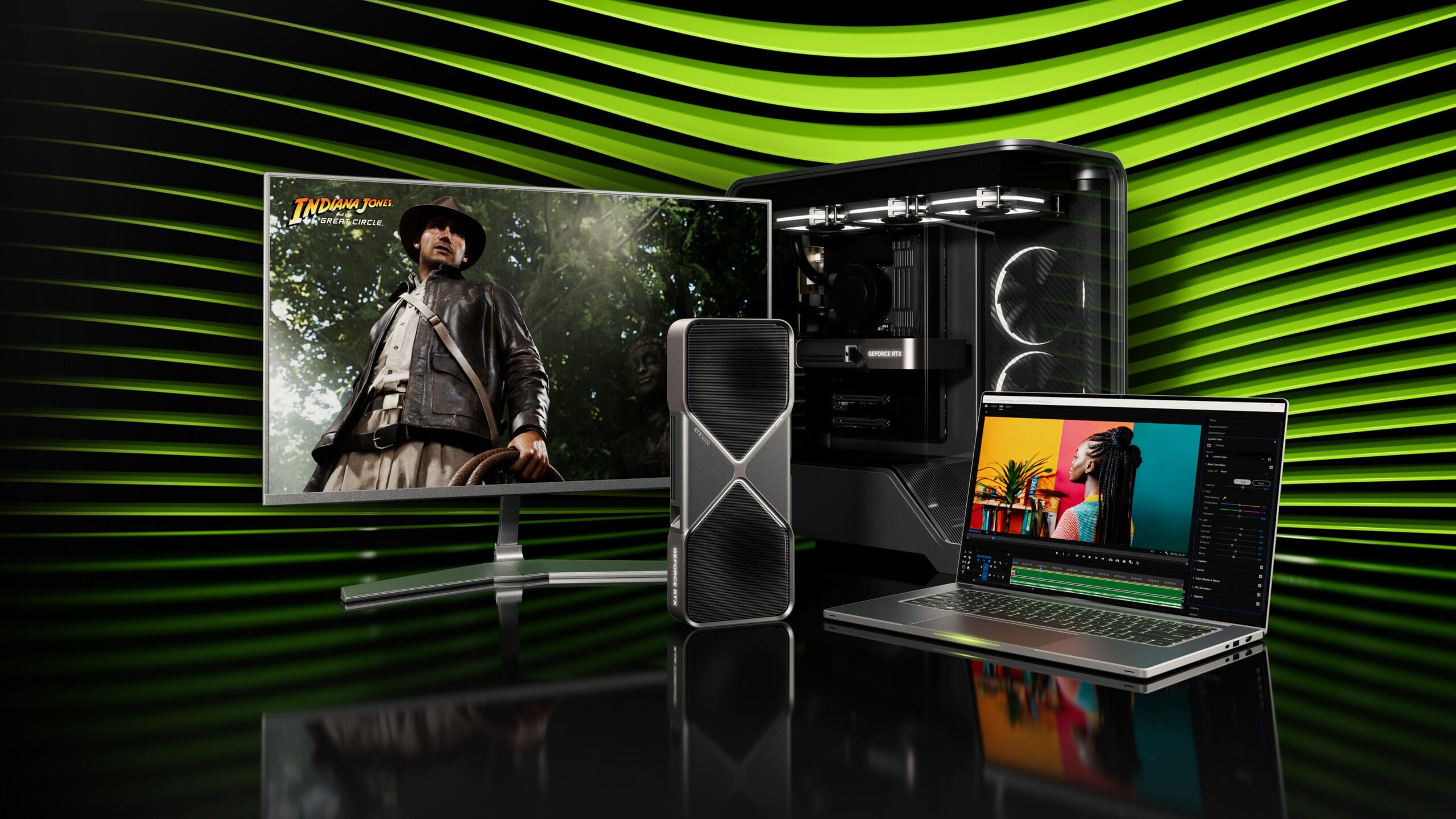Nvidia’s next-generation GPUs were unveiled at CES 2025 in Las Vegas. Updated with the new Blackwell architecture and featuring a slew of new software features, Nvidia claims that even the cheapest of these new cards will beat the previous flagship, the RTX 4090, in gaming. While these claims must be taken with the heaviest of pinches of salt, the GPUs do promise a massive performance uplift over previous gen.
Here are the key specs of the four cards launched. You can of course find a more detailed breakdown on Nvidia’s site here.
| Specs | RTX 5090 | RTX 5080 | RTX 5070Ti | RTX 5070 |
| CUDA cores | 21,760 | 10,752 | 8,960 | 6,144 |
| TOPS (AI) | 3,352 | 1,801 | 1,406 | 998 |
| TFLOPS (RT) | 318 | 171 | 133 | 94 |
| VRAM (GDDR7) | 32 GB | 16 GB | 16 GB | 12 GB |
| Memory bus | 512-bit | 256-bit | 256-bit | 192-bit |
| Price (INR) | 2,14,000 | 1,07,000 | 80,000 | 59,000 |
As usual, Nvidia’s been stingy with VRAM, limiting the RTX 5080 to just 16 GB, and the 5070 to 12 GB. Gamers will note that new games like Indiana Jones and the Great Circle require a minimum of 12 GB VRAM to enable path tracing. While Indiana Jones is an outlier, we have no doubt that newer games will begin pushing the limits of 12 GB GPUs in the coming months and it’s a shame that Nvidia’s crippling a perfectly good GPU (the 5070) by limiting its long-term viability.
Other hardware updates include a move to faster GDDR7 memory (it’s nearly twice as fast now), support for transformer AI models, an updated media engine with support for more codecs, and an upgrade to the DP2.1b spec that adds 4K@480 Hz and 8K@120 Hz support using DSC.
Nvidia claims that each of the cards is about twice as fast as its previous-gen counterpart. We’ll have to wait for actual benchmarks to confirm, but we must admit that we are cautiously optimistic on this front.
DLSS 4
The headlining feature of the launch is DLSS 4. DLSS or Deep Learning Super Sampling refers to a suite of AI features that boost frame-rates in games. DLSS 3, which debuted with the RTX 40 series GPUs, introduced frame-generation, where an AI-generated frame would be inserted after a real frame based on a prediction of the player’s movement. This process effectively doubles perceived frame-rate.
DLSS 4 uses a new technique called multi-frame generation to add up to three additional AI generated frames after every real frame. Using this technique, Nvidia claims that they’re able to boost frame-rates up to 8x. Incidentally, this is also how Nvidia is able to make the claim that the Rs 59,000 RTX 5070 beats the Rs 2,00,000+ RTX 4090.
Reflex 2 and Frame Warp
The downside of frame-generation is input latency, where player input is only factored in when a real frame is rendered. In the case of DLSS 4, that means the visuals are only responding to player input about 12% of the time, which would be feel terrible when gaming.
Reflex 2 builds on Reflex to reduce input latency by synchronising CPU and GPU actions. It then uses Frame Warp to literally distort or warp fake (AI-generated) frames at the very last millisecond to better match player movement. Nvidia claims that these features reduce input latency by 75%.
DLSS Ray Reconstruction, Super Resolution, and DLAA improvements
Ray Reconstruction — an AI model that helps improve reflections, lighting, reduce ghosting, and more — sees an update. Judging by CES floor demos, it seems like the improvements are huge and everything from moving text to particle animation should look much smoother. The effect of DLSS SR and DLAA is also better now, says Nvidia.
These improvements are, again, a result of a switch to a transformer AI model. Explaining the differences between the older CNN model and the new transformer model is beyond the scope of this article, suffice it to say that the Transfer model is more, for lack of a better word, intelligent. It’s faster and has better contextual awareness of the data it’s processing, allowing it to be more accurate.
The RTX 5080 and 5090 will be available on 30 January, while the RTX 5070 and 5070 Ti will be available in February.


